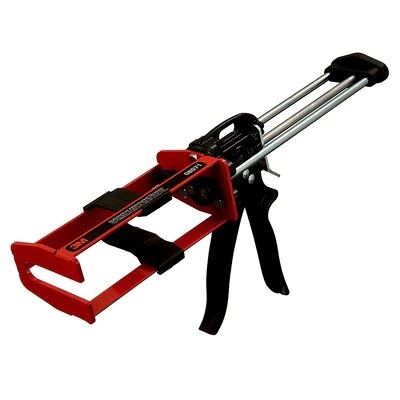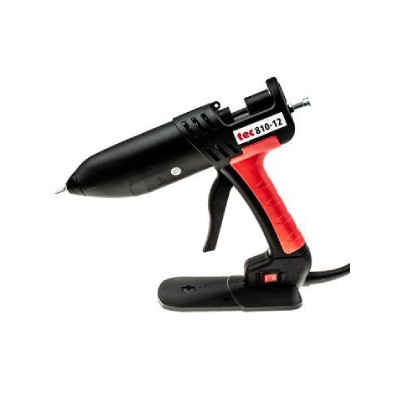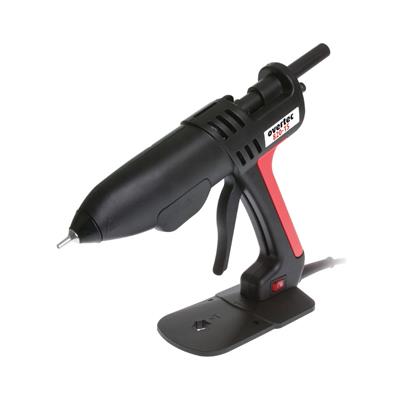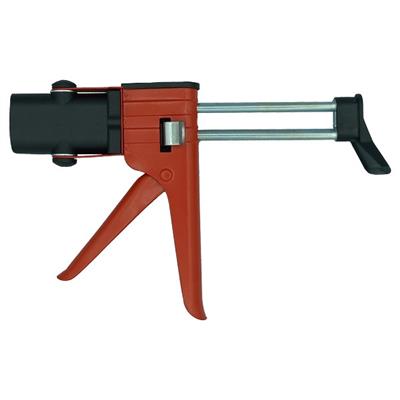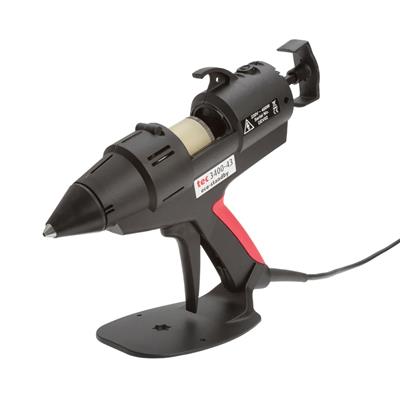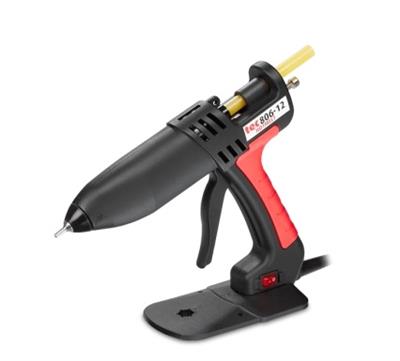How to choose your glue gun

Glue guns make it easier to apply your glues. Some glues are indeed very hard to apply manually, even totally impossible like hot glues. The glue guns will save you time, precision, efficiency and will drastically improve the quality of your assemblies. However, with so many models available, it is not always easy to know which model is the right one for your application. À travers la procédure qui suit, Etilux vous guidera en vous donnant les bonnes questions à vous poser et en vous proposant des choix de réponses parmi notre vaste choix de pistolets à colles.
Through the following procedure, Etilux will guide you by giving you the right questions to ask yourself and by proposing answers among our vast choice of glue guns.
Before thinking about the glue gun, you must first decide on the type of glue you want to apply. Depending on your uses, some types of glue will be more effective than others. Here is a brief reminder of the most common types of glue used in the professional world.
Hotmelt glues
Hotmelt glues are glues that need to be heated to be applied. They come in a solid state, in the form of sticks, which must be melted into a liquid state before being applied. The glue will resolidify as it cools, giving a very strong bond. Hotmelt adhesives are a versatile bonding solution that will suit most situations and materials to be joined. As mentioned above, it can only be applied with a gun.
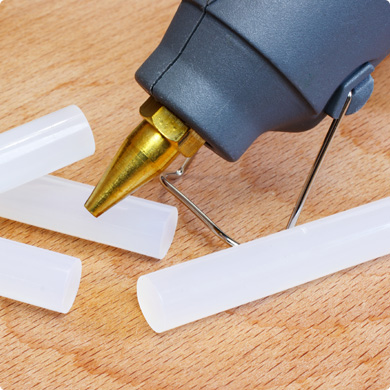
Two-component adhesives
Two-component adhesives are adhesives that are fixed by chemical reaction. They consist of a main resin and a hardening component. Only when these two components mix does the adhesive harden. Different types of two-component adhesives exist, with different mixing ratios (1/1, ½, 1/10, etc.). They are distinguished by their adhesive strength. They are therefore ideal for structural assemblies such as metals, plastics, etc.
Mastic adhesives
Mastic adhesives are solvent-free adhesives made from polymers. They come in the form of a compact paste and are easily applied with a gun or roller. They are ideal for small multi-material assemblies, interior or exterior, for insulation and for joints.
UV adhesives
UV adhesives are polymer-based liquid adhesives. They are clear and only cure when exposed to a UV light source. Because of their transparency, they are ideal for assembling glass, plastics or any form of transparent material or requiring invisible fasteners.
Choosing the type of glue gun
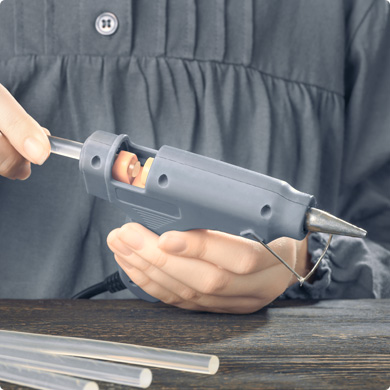
Once you have decided on your choice of glue, all you have to do is choose the type of gun best suited to your use, depending on the type of glue. Indeed, as described above, each glue has well-defined characteristics. This is why each type of glue has its own specific requirements in terms of glue guns.
Guns for hotmelt adhesives
The diameter of the sticks
Hotmelt adhesives come in several stick diameter sizes (11/12mm - 15/16mm - 25mm - 43mm). This will definitely influence the choice of your glue gun. If you need to make small assemblies with precision, choose a small gun. If you need to assemble large parts or make a large number of joints, choose a larger diameter gun.
Warm-up time
The "basic" hot melt glue guns are intended for domestic use. Their power does not exceed 50 W and they are very cheap. However, they take some time to reach the melting temperature of the glue.
The "pro" hot melt glue guns are intended for more intensive use. With a power between 150 W and 250 W, they take only a few minutes to heat up. They are therefore ideal for professionals working on one assembly at a time, with precision. But they can also work continuously, 8 hours a day.
High flow guns are designed for industrial use. Their power of up to 1000 W allows them to heat up almost instantly. Their large stick diameter and pneumatic thrust make them the right choice if you need to assemble a large number of large or small parts. A model for hot melt spray adhesives is also available.
Glue output rate
There are two options in terms of output. Manual glue guns and pneumatic glue guns. The former expel a small amount of glue with each pull of the trigger. It is a cheap solution ideal for small assemblies. Pneumatic guns expel glue continuously as long as the trigger is pulled. This is a more expensive solution, but more comfortable to use and more effective for larger assemblies or extended use. A compressor with a maximum of 8 bar with a pressure relief valve should suffice.
The gun's power supply
This only applies to electric glue guns. You can choose between battery operated and mains operated glue guns. If you're working on the go, battery-powered glue guns are the best choice, and if you're working at a fixed location, an AC power gun is your first choice. You can also use well-known hardware store brands of batteries (Bosh, B & D, Milwaukee, etc.).
Guns for two-component glues
The size of the cartridges
Depending on the size of the component cartridges you have, the size of the guns change. Three main sizes: 50ml; 200ml; 400ml. For prolonged use or large assemblies, prefer the large sizes, if it is for more occasional use, a small gun size will suffice. Pneumatic models also exist for this range of glue.
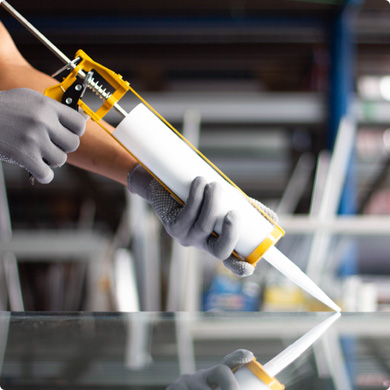
Mixing ratios
As previously mentioned, two-component glues are differentiated by their mixing ratios. It goes without saying that you should choose your glue gun according to the mixing ratio of your glue.
Mastic Guns
Among our different putty guns, you will have to choose between different tube sizes and between manual and electric guns.
UVglue guns
UV glue guns are most often used for small assemblies requiring precision. You will therefore have to choose the diameter of the outlet and its shape (straight, flat, inclined at 45°, etc.)
You now have all the information you need to make an informed choice about your glue guns. Contact our specialist for more information.






